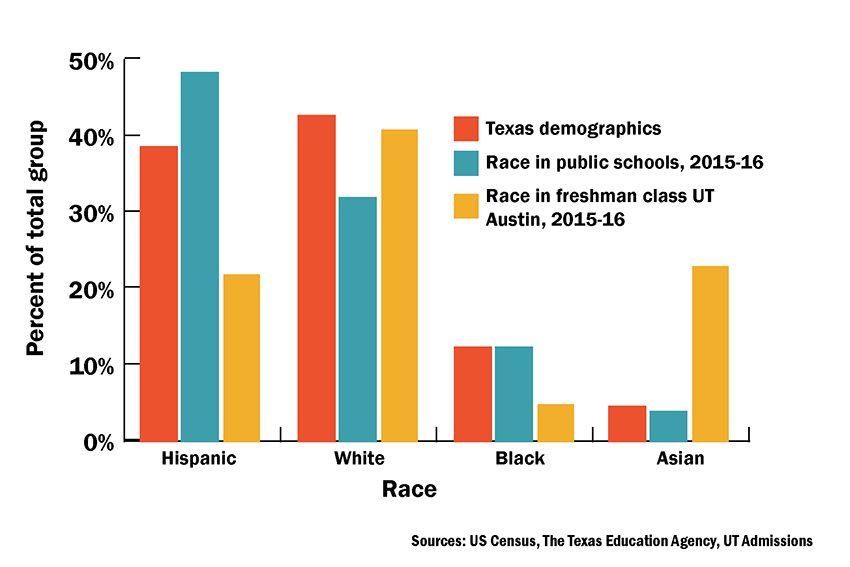The Supreme Court ruled in favor of UT-Austin’s use of race as a factor in the admissions process in June. The ruling in Fisher v. University of Texas allows UT and other universities across the nation to continue using race as part of a holistic admissions process.
The Supreme Court ruled 4-3 in favor of UT, with Justice Anthony Kennedy writing for the majority decision joined by Justices Ruth Bader Ginsburg, Stephen Breyer and Sonia Sotomayor.
Despite the Supreme Court’s decision to allow race to be a determining factor in the college admissions process, Kennedy warned against settling with the current procedure.
“The University, however, does have a continuing obligation to satisfy the strict scrutiny burden: by periodically reassessing the admission program’s constitutionality, and efficacy, in light of the school’s experience and the data it has gathered since adopting its admissions plan,” Kennedy wrote.
At UT, three-fourths of an incoming class are admitted using the top 10 percent rule. The remaining quarter of applicants are chosen through a “holistic review,” which considers race.
Plaintiff Abigail Fisher argued the top 10 percent rule was a sufficient tool for diversifying campus, and using race when selecting the last fourth of admits was unnecessary.
While Kennedy did not rule on this claim, he stated that since affirmative action had only been in place at UT for three years, the University hadn’t had time to study its effects.
As The New York Times reported in 2012, UT Austin explains that “the school’s affirmative action program was needed to build a student body diverse enough to include minority students with a broad range of backgrounds and for the campus to have a ‘critical mass’ of minority students in most classrooms.”
For schools that offer associate degrees, such as community colleges, enrollment of black students has increased from 11 percent in 1994 to 16 percent in 2014. Universities with bachelor’s, master’s and doctoral degree programs saw a shift from 11 percent in 1994 to 14 percent.





















